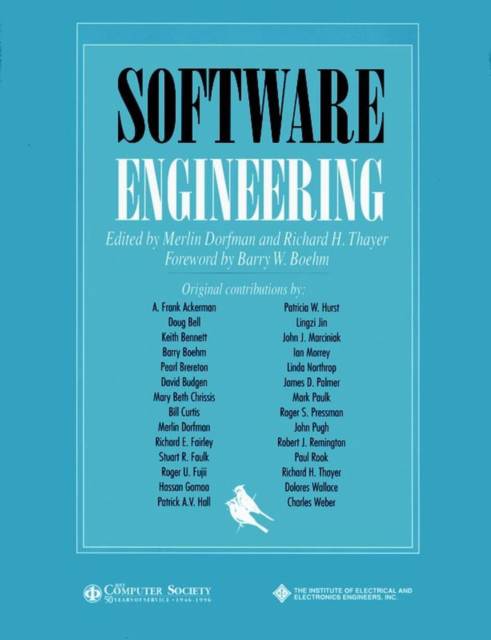
- Afhalen na 1 uur in een winkel met voorraad
- Gratis thuislevering in België vanaf € 30
- Ruim aanbod met 7 miljoen producten
- Afhalen na 1 uur in een winkel met voorraad
- Gratis thuislevering in België vanaf € 30
- Ruim aanbod met 7 miljoen producten
Zoeken
Omschrijving
This first edition of the popular tutorial, Software Engineering, describes the current state of the practice of software engineering. This book begins with an overview of current issues and in particular the engineering of large complex systems. Its collection of landmark papers goes on to describe the problems that occur in developing software, and presents the concepts for system engineering of software intensive systems and of engineering software products as the solution to the "software crisis."
The text illustrates the phases of the software development life cycle: requirements, design, implementation, testing, and maintenance. Furthermore, it discusses the current practices in requirements and design, and defines software development methodologies, including a special emphasis on object-oriented tools and formal methods. The book also covers programming activities as they affect software engineering, details verification and validation throughout the software life cycle, and discusses software quality assurance, configuration management, and standards. In addition, the book covers project management and risk management concerns, and discusses the various life cycle process models including the spiral and incremental models.
The text illustrates the phases of the software development life cycle: requirements, design, implementation, testing, and maintenance. Furthermore, it discusses the current practices in requirements and design, and defines software development methodologies, including a special emphasis on object-oriented tools and formal methods. The book also covers programming activities as they affect software engineering, details verification and validation throughout the software life cycle, and discusses software quality assurance, configuration management, and standards. In addition, the book covers project management and risk management concerns, and discusses the various life cycle process models including the spiral and incremental models.
Specificaties
Betrokkenen
- Uitgeverij:
Inhoud
- Aantal bladzijden:
- 552
- Taal:
- Engels
- Reeks:
- Reeksnummer:
- nr. 45
Eigenschappen
- Productcode (EAN):
- 9780818676093
- Verschijningsdatum:
- 15/11/1996
- Uitvoering:
- Paperback
- Formaat:
- Trade paperback (VS)
- Afmetingen:
- 206 mm x 279 mm
- Gewicht:
- 1215 g

Alleen bij Standaard Boekhandel
+ 390 punten op je klantenkaart van Standaard Boekhandel
Beoordelingen
We publiceren alleen reviews die voldoen aan de voorwaarden voor reviews. Bekijk onze voorwaarden voor reviews.










